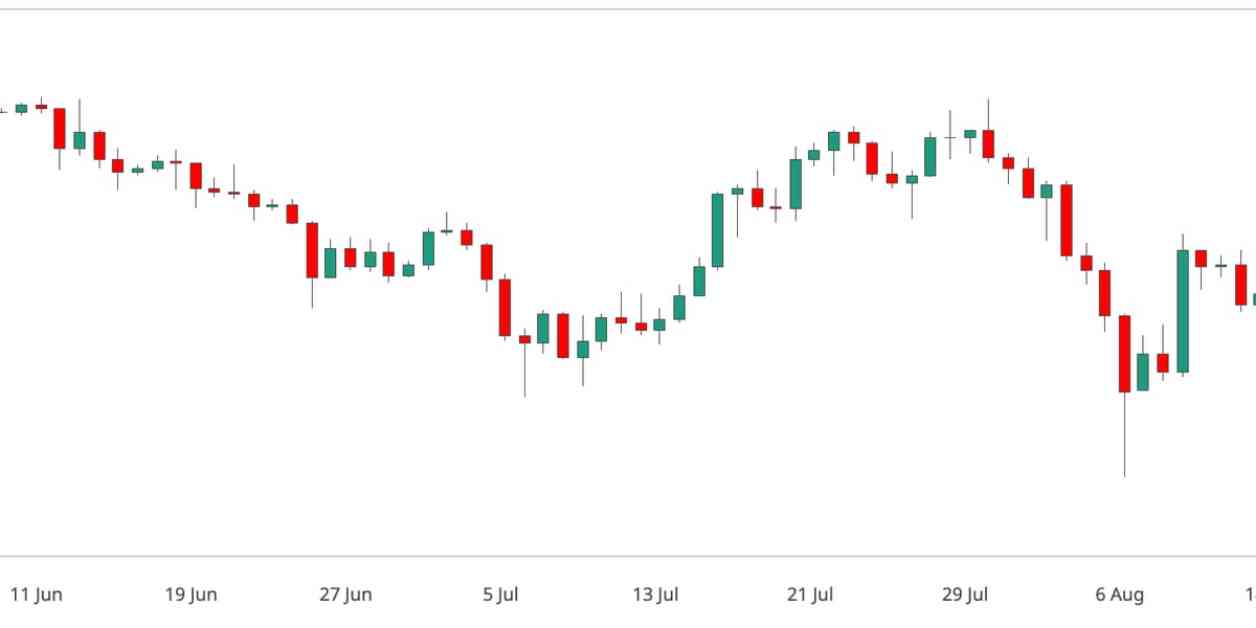Bitcoin (BTC) Price Movement: Impact of Powell’s Jackson Hole Speech on Crypto Markets
Bitcoin’s price has been hovering between $60,000 and $62,000, maintaining stability in the broader cryptocurrency market. Traders are closely watching Federal Reserve Chair Jerome Powell’s speech at the Jackson Hole meeting on Friday, with varying opinions on the potential impact on digital assets. Amberdata, in their weekly newsletter, anticipates a dovish tone from Powell following a positive Consumer Price Index (CPI) reading last Wednesday. This sentiment suggests a favorable outcome for risk assets, including cryptocurrencies. On the other hand, SignalPlus, a crypto-options-focused tech platform, believes Powell may adopt a cautious approach. Despite differing opinions, the options market, as observed on Deribit, is not anticipating a significant volatility spike induced by Powell’s speech. Martin Cheung, head of options trading at Pulsar, noted that single-day BTC options are indicating a potential 2.5% price swing in either direction. Markus Thielen, founder of 10x Research, remains optimistic about the market setup, pointing to an ascending triangle formation that could lead to a minor rally in Bitcoin’s price.
Donald Trump, the Republican presidential candidate, is making headlines in the crypto world by endorsing a decentralized finance platform called “The DeFiant Ones” as part of his strategy to attract crypto voters ahead of the upcoming elections. Trump’s message on Truth Social emphasizes a need to challenge the dominance of big banks and financial elites, resonating with the ethos of decentralization promoted by the crypto community. The platform’s launch details remain scarce, leaving many curious about its features and functionalities. Trump’s endorsement of decentralized finance aligns with the broader narrative of leveraging digital assets and blockchain technology to empower unbanked individuals and democratize access to financial services.
Decentralized finance (DeFi) is experiencing a resurgence, with the total value locked in DeFi projects expected to reach new highs in the coming year, according to Steno Research. The DeFi boom during the summer of 2020 coincided with the Federal Reserve’s decision to lower interest rates close to zero, creating an environment that favored alternative financial solutions. Analyst Mads Eberhardt highlights the significance of interest rates in driving DeFi adoption, as lower rates incentivize investors to explore decentralized financial markets for higher-yield opportunities. Additionally, reduced interest rates diminish the appeal of holding stablecoins pegged to the dollar, encouraging investors to take on more risk within the crypto market.
ETH’s Options Skews and Market Sentiment
Amidst the anticipation surrounding Powell’s speech, the options market for Ethereum (ETH) presents an interesting dynamic. Amberdata and Deribit data reveal that the 30- and 60-day options skews for ETH remain negative, indicating a preference for protective puts that offer downside protection at a premium compared to calls. This trend suggests a cautious approach by some traders who are hedging their positions ahead of potential market volatility triggered by Powell’s remarks. The negative options skews reflect a market sentiment skewed towards protecting against downside risks, highlighting the uncertainty surrounding the impact of external events on cryptocurrency prices.
The Influence of Institutional Investors on Crypto Markets
In recent years, institutional investors have played a significant role in shaping the landscape of the cryptocurrency market. Their entry into the space has brought a newfound level of legitimacy and stability, driving increased adoption and market capitalization. Institutions like hedge funds, asset managers, and corporate treasuries have recognized the potential of digital assets as an alternative investment class, diversifying their portfolios to include cryptocurrencies like Bitcoin and Ethereum. The influx of institutional capital has not only bolstered market liquidity but also contributed to reducing price volatility, making cryptocurrencies more appealing to traditional investors seeking exposure to this emerging asset class.
Regulatory Developments and Market Sentiment
Regulatory developments continue to influence market sentiment and investor confidence in the cryptocurrency space. The evolving regulatory landscape, both domestically and internationally, has sparked debates around the legal status of digital assets, taxation policies, and investor protection measures. Regulatory clarity is crucial for fostering trust and stability in the crypto market, as uncertainty regarding compliance requirements can deter institutional participation and hinder mainstream adoption. Collaborative efforts between industry stakeholders, regulators, and policymakers are essential to establish a regulatory framework that balances innovation with consumer protection and financial stability.
The Role of Technology in Shaping the Future of Finance
Blockchain technology has emerged as a disruptive force in the financial industry, offering innovative solutions that enhance transparency, security, and efficiency in traditional financial processes. The decentralized nature of blockchain networks enables peer-to-peer transactions without the need for intermediaries, reducing costs and improving transaction speed. Smart contracts, a key feature of blockchain technology, automate and enforce contractual agreements, streamlining complex financial transactions and eliminating the need for manual intervention. As blockchain technology continues to evolve, its applications in finance, supply chain management, healthcare, and other industries hold the potential to revolutionize existing systems and drive digital transformation on a global scale.
The Future of Cryptocurrency Adoption and Integration
The increasing acceptance and integration of cryptocurrencies into mainstream financial systems signal a broader shift towards digital assets as a legitimate form of value exchange. Major financial institutions, payment processors, and technology companies are exploring ways to incorporate cryptocurrencies into their offerings, recognizing the benefits of blockchain technology in enhancing security, efficiency, and accessibility. The growing demand for digital currencies among consumers and businesses highlights a changing paradigm in how we perceive and utilize money in the digital age. As regulatory frameworks evolve and technological advancements continue to reshape the financial landscape, the future of cryptocurrency adoption appears poised for continued growth and innovation.
In conclusion, the intersection of macroeconomic events, regulatory developments, institutional involvement, and technological advancements continues to shape the trajectory of the cryptocurrency market. With Bitcoin’s price movement closely tied to external factors like Federal Reserve announcements and political endorsements, market participants must remain vigilant and adaptable to navigate the evolving landscape of digital assets. As the crypto market matures and diversifies, opportunities for innovation, collaboration, and growth abound, paving the way for a more inclusive and decentralized financial ecosystem.














